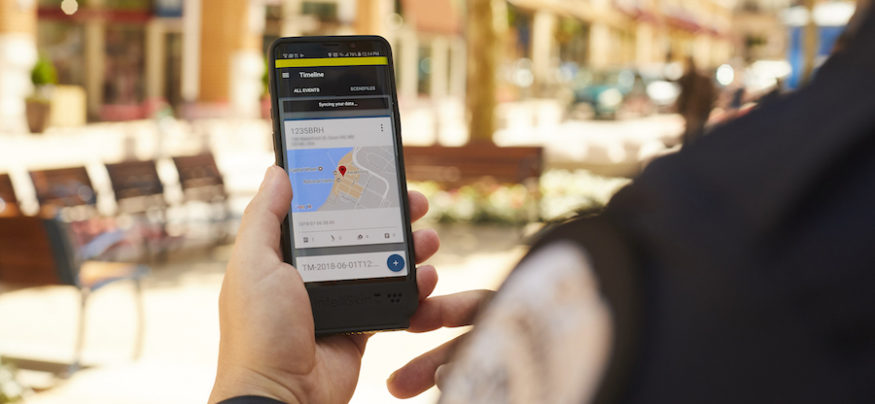FirstNet is an important piece of the emerging, mobile-first public safety communications landscape, and Samsung is providing the device support agencies need to take advantage of it.
The Road to FirstNet
Until the late 1980s, law enforcement agencies had been well served by traditional land mobile radios. However, increasing radio traffic and limited frequencies drove many departments to embrace mobile data terminals to convey greater levels of information more effectively. Those early data terminals quickly evolved into much more powerful mobile computers that were capable of supporting functions like computer-aided dispatch (CAD), automatic vehicle location, license plate readers and in-car video.
By the dawn of the 21st century, in-car computers had become ubiquitous in law enforcement, and officers quickly grew dependent on them both as a primary source of information and an effective means of communication. Recognizing that in-car computers can limit an officer’s effectiveness in the field, many agencies are now equipping their personnel with powerful smartphones that can actually surpass an in-car computer’s functionality.
The 9/11 terrorist attacks taught our country many painful lessons. Among them was that our public safety agencies need interoperability and an assurance of priority for the networks on which they depend. In 2012, after years of political wrangling and protracted discussions among public safety communication experts, Congress authorized the First Responder Network Authority. Quickly dubbed FirstNet, the mission was both comprehensive and concise: “… to develop, build and operate the nationwide, broadband network that equips first responders to save lives and protect U.S. communities.” In 2017, after a lengthy competitive bidding process, the Department of Commerce awarded a 25-year contract to AT&T.
The PS-LTE Core
A key component of FirstNet is the allocation of 20MHz of additional frequency space (commonly known as Band 14) to form a Public Safety Long Term Evolution (PS-LTE) core, thus ensuring adequate bandwidth for mission essential and mission-critical operations. The core allows traffic from public safety to be handled separately from commercial cellular traffic, guaranteeing priority access and, when necessary, ruthless preemption. This gives first responders the ability to conduct data-intensive operations with confidence, regardless of network demands. FirstNet will provide end-to-end encryption, round-the clock-security monitoring and overall superior reliability and availability.
Mobilizing Law Enforcement
Plan and implement a mobile initiative at your agency with this practical roadmap. Download Now
FirstNet is conceived as a secure, nationwide communications system that will provide interoperability while supporting voice, data, text and video communications. This means public safety personnel using FirstNet will have prioritized network access in times of crisis or peak demand. Mission essential information, including real-time geolocation, video and high-resolution photographs, will get through to those who need it — even when traditional cellular network users are experiencing slow or nonexistent connections. In effect, FirstNet will serve as a force-multiplier by allowing agencies to improve overall situational awareness and ensure the effective use of limited resources.
FirstNet recently partnered with the Boston and Brookline Police Departments to support the 2018 Boston Marathon, which regularly draws approximately 30,000 runners and a half-million observers. This is definitely the type of event that strains cellular networks. Eighty FirstNet devices were distributed to emergency personnel working the event. In addition, both police and fire used location tracking applications to manage resources and direct responses. According to Scott Wilder, director of technology and communications for Brookline PD, FirstNet made a noticeable difference. “FirstNet definitely enhanced our communications like we’ve never had before,” Wilder said.
Samsung Delivers FirstNet-Enabled Devices
More than a decade ago, Samsung recognized the opportunity to transform public safety by leveraging the combination of prioritized broadband and powerful, well-designed mobile devices. The company has joined forces with software innovators in public safety to bring CAD and other applications to mobile devices. The FirstNet initiative has tremendous potential to support the new communications paradigm, and Samsung has moved quickly to bring FirstNet capabilities to its device family.
Access to FirstNet is limited to devices that are capable of operating on the Band 14 frequencies. Each device must also have a FirstNet SIM card installed so the network can recognize it as being assigned to an authorized public safety agency or individual. Samsung’s Galaxy Note9, S9 and S9+ all support Band 14 to take advantage of the full FirstNet spectrum out of the box.
As agencies engage with FirstNet and the network matures, overall operational effectiveness for public safety will improve. Network capacity will continue to increase, and coverage will be extensive, ultimately reaching rural areas where wireless service has been very limited. With a network that is prioritized for public safety, first responders can be confident their communications are riding on a network that will deliver the information they need, when and where they need it.
Learn more about the public safety technology that’s improving officer safety and access to information.








